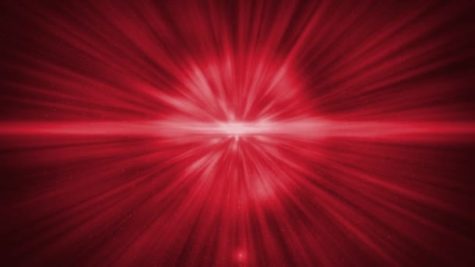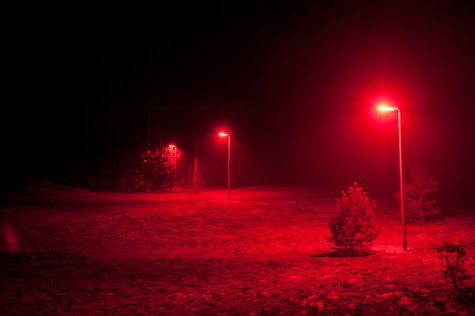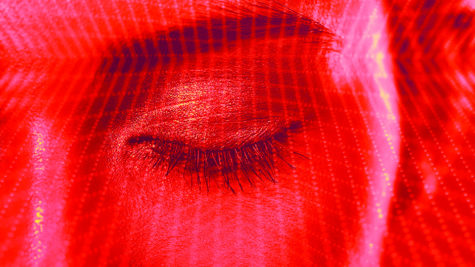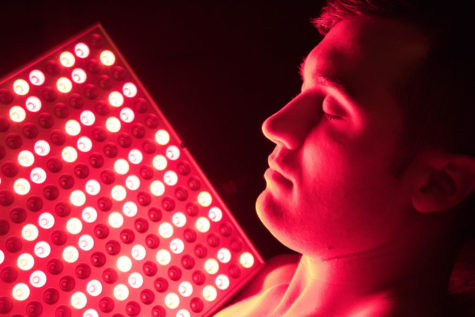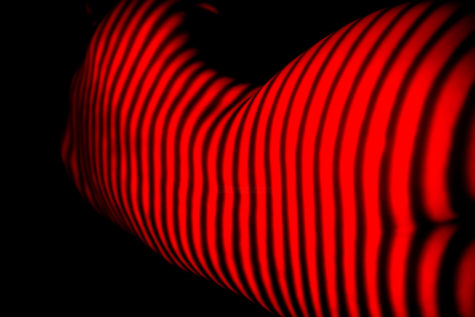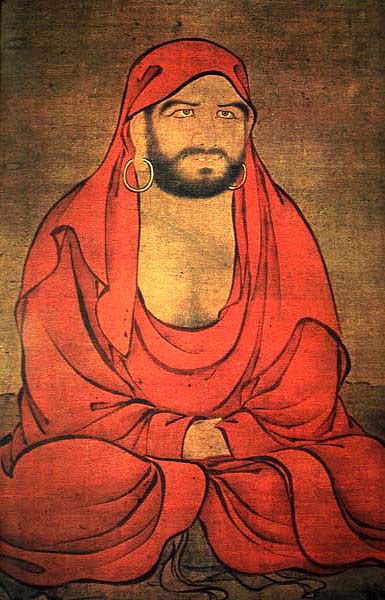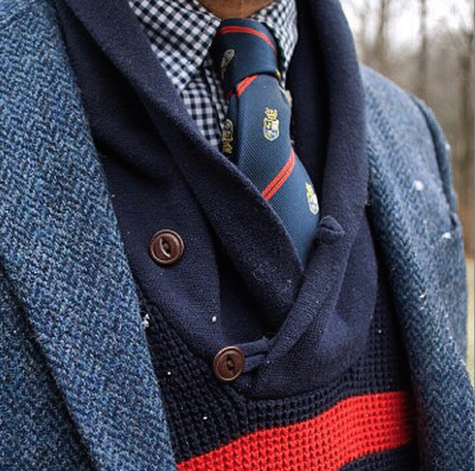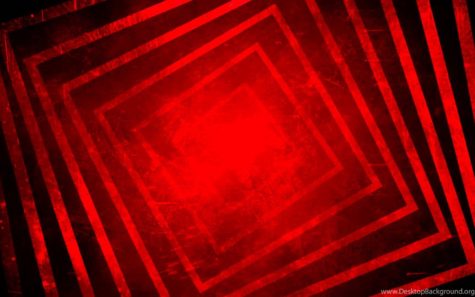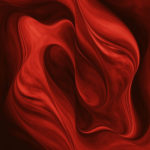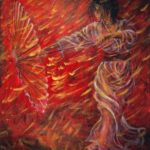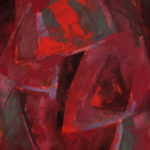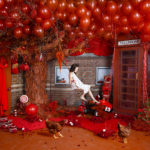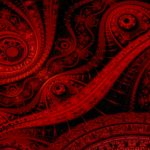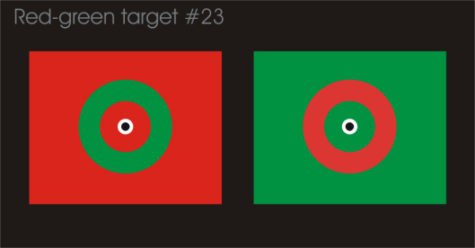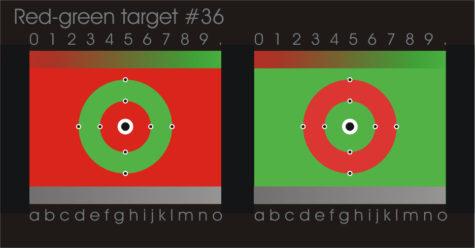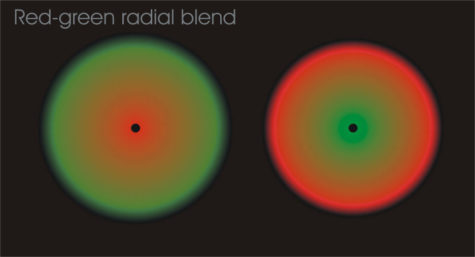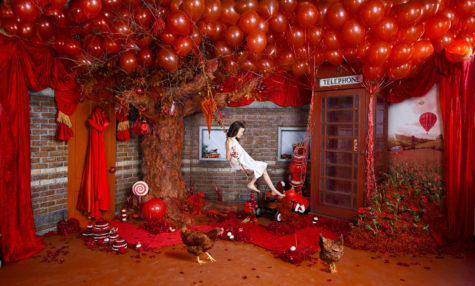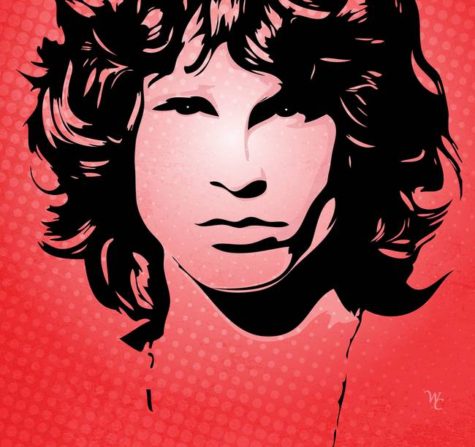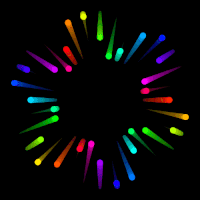Red
Red Light For Your Eyes
Declining eyesight can be improved by looking at red light, pilot study says. Red lights can help prevent damage to mitochondria in the retina, which leads to declining eyesight. It will be as easy as brushing your teeth or shaving, and as long as future studies support it, it just might save your eyesight.
Here’s the scoop on it from CNN:
A few minutes of looking into a deep red light could have a dramatic effect on preventing eyesight decline as we age, according to a new study published this week in The Journals of Gerontology.
If the results are replicated in future studies, and approved by the US Food and Drug Administration, the light could augur a new era in which millions of people have access to the easy home-based therapy. It would give them a new layer of protection against the natural aging processes that steal our eyes’ sensitivity to light and ability to distinguish colors.
“You don’t need to use it for very long to start getting a strong result,” said lead author Glen Jeffery, a professor of neuroscience at University College London’s Institute of Ophthalmology.
The science works, Jeffery said, because the light stimulates the health of mitochondria, which are like batteries in our cells.
And because mitochondria are implicated in a broad range of diseases, insights like these could help lead to new treatments for diseases including Parkinson’s and diabetes.
All it takes is a few minutes.
The study was small, a pilot study to test the concept. Researchers recruited 12 men and 12 women, whose ages ranged from 28 to 72. Each participant was given a small handheld flashlight that emitted a red light with a wavelength of 670 nanometers. That wavelength is toward the long end of the visible spectrum, and just short of an infrared wavelength, which tends to be invisible to the human eye.
They spent three minutes each day looking into the light over a period of two weeks.
The lights work on both cones and rods in the eye. Cones are photo receptor cells that detect color and work best in well-lit situations. Rods, which are much more plentiful, are retina cells that specialize in helping us see in dim light, according to the American Academy of Ophthalmology.
Researchers measured the cone function in subjects’ eyes by having them identify colored letters with low contrast. And they measured their eyes’ rod sensitivity by asking them to detect light signals in the dark.
There was a 14% improvement in the ability to see colors, or cone color contrast sensitivity, for the entire two dozen participants.
Improvement, however, was most significant in study participants over age 40. For those ages, cone color contrast sensitivity rose by 20% over the course of the study.
That age bracket also saw significant increases in rod threshold, which corresponds to the ability to see in low light. Study participants under 40 also experienced some improvement, but didn’t see the same jump as older subjects. Younger eyes haven’t declined as much as older eyes.
“The retina ages faster than any other organ in your body,” Jeffery said. “From an evolutionary perspective, we fundamentally have never lived past 40.”
Now, of course, we regularly live well beyond that age, and need ways to nurture the organs that for millennia have been the most likely to wear out earliest in life.
Researchers from University College London used small red lights like this one to stimulate retina mitochondria with the goal of stoppying eyesight loss.
Adults ages 40 and higher are are at the highest risk for eye diseases such as cataracts, diabetic retinopathy, glaucoma and age-related macular degeneration, according to the US Centers for Disease Control and Prevention.
These diseases can occur in young people but their prevalence increases with age. At the beginning stages, these conditions are treatable, although they can start creeping in before symptoms appear.
That’s why the AAO recommends increasing regular eye exams to every two to four years for people once they cross age 40, and to increase exams to every one to two years at age 65.
The CDC notes that the progression of these diseases can also be slowed by eating a diet rich in antioxidants and maintaining normal levels of blood sugar, body weight and blood pressure. If those indicators get out of normal range, they can further degeneration by breaking down blood vessels in the eyes, the American Heart Associations says.
It’s easy and safe to use
This new study in humans builds on results in fruit flies and in mice, which also showed that red light could improve the functioning of mitochondria.
For instance, a 2015 study showed that near-infrared light could spur energy production, improve mobility and extend the lifespan of fruit flies. And a 2017 study of visible red light at the edge of infrared reported a 25% improvement in the functioning of retinas in mice.
Longer-term independent safety studies of red lights in humans would have to garner similar benefits for this method of eyesight protection to be approved by the FDA. If so, you’d still need to use a properly vetted product under a doctor’s supervision.
For example, while the laser pointers approved by the FDA for sale in the US don’t cause eye damage, a 2018 case study in the New England Journal of Medicine outlined how a boy in Greece permanently injured an eye by pointing a green laser pointer into it.
One of the best assets of the red lights they used is that they are safe, Jeffery said. The researchers all tested the red lights on their own eyes before beginning the study and have found no ill effects.
The research subjects in the study also reported no ill effects. “If you use this every day, we have no evidence to say it’s detrimental,” Jeffery said.
That fits with prior research, in which the safety of red lights has long been established, explained Dr. Raj Maturi, an associate professor at Indiana University School of Medicine. It would be a very easy pathway to FDA approval,” he said. But more studies are needed to prove it helps. Although these lights aren’t harmful, Maturi wasn’t ready to embrace the idea that they’re incredibly helpful either.
This pilot study lacked a control group of patients who could have been exposed to a dummy light that emitted, he noted. The results found in this small study of 24 participants might not bear out in the larger population. Of the subjects over 40 in this study, individual characteristics of a few of them would be enough to make the eyesight improvements look stronger than they actually are.
“The data set could be brought down by three or four subjects,” he said. And while participants improved in how they saw the blue color axis, Maturi pointed out that they didn’t have statistically significant gains in how they saw the red color axis. To really test these insights, it’ll take a double-blind controlled study with a larger group of subjects and longer monitoring over time.
LED lights could help with many diseases
LED lights work in this arena because of what scientists call the mitochondrial theory of aging, in that humans and animals age as damage accumulates in mitochondria and mitochondrial DNA.
Therefore stimulating mitochondria to reduce damage is a way of slowing aging in general. Our retinas are chock-full of mitochondria — the highest concentration of mitochondria of any part of the body.
That’s a main reason why Jeffery and his colleagues sought to test out the red lights in a specific area of aging such as eyesight decline. Mitochondria absorb longer wavelengths of light, making the near-infrared light their preferred choice to test.
Red lights can improve function in a range of diseases, particularly in the mitochondria in those undergoing aging with conditions such as Parkinson’s, he noted. “Every disease could have a mitochondrial angle,” Jeffery said. “In diabetes, for instance, your mitochondria are very upset.”
Each application carries that same human desire to fend off processes that are both natural and universal. “We’re all going to suffer from aging. So let’s try to go gently if we can,” he said.
Red Light Therapy
Red light therapy (RLT) is a treatment that may help skin, muscle tissue, and other parts of your body heal. It exposes you to low levels of red or near-infrared light. Infrared light is a type of energy your eyes can’t see, but your body can feel as heat. Red light is similar to infrared, but you can see it.
Red light therapy is also called low-level laser therapy (LLLT), low-power laser therapy (LPLT), and photobiomodulation (PBM).
How Does Red Light Therapy Work?
With red light therapy, you expose your skin to a lamp, device, or laser with a red light. A part of your cells called mitochondria, sometimes called the “power generators” of your cells, soak it up and make more energy. Some experts think this helps cells repair themselves and become healthier. This spurs healing in skin and muscle tissue.
Red light therapy uses very low levels of heat and doesn’t hurt or burn the skin. It’s not the same type of light used in tanning booths, and it doesn’t expose your skin to damaging UV rays.
What Does It Treat?
Researchers have known about red light therapy for a while. But there aren’t a lot of studies on it, and they don’t know if it’s better than other types of treatment used to help you heal. Red light therapy may help with:
- Dementia.
In one small study, people with dementia who got regular near-infrared light therapy on their heads and through their noses for 12 weeks had better memories, slept better, and were angry less often.
- Dental pain.
In another small study, people with temporomandibular dysfunction syndrome (TMD) had less pain, clicking, and jaw tenderness after red light therapy.
- Hair loss.
One study found that men and women with androgenetic alopecia (a genetic disorder that causes hair loss) who used an at-home RLT device for 24 weeks grew thicker hair. People in the study who used a fake RLT device didn’t get the same results.
- Osteoarthritis.
One study found red and infrared light therapy cut osteoarthritis-related pain by more than 50%.
Tendinitis. A very small study of 7 people suggests RLT lessens inflammation and pain in people with Achilles tendinitis.
Wrinkles and other signs of skin aging and skin damage. Research shows RLT may smooth your skin and help with wrinkles. RLT also helps with acne scars, burns, and signs of UV sun damage.
What Are the Risks?
Red light therapy is generally considered safe, even though researchers aren’t exactly sure how and why it works. And there are no set rules on how much light to use. Too much light may damage skin tissue, but too little might not work as well.
Where Do You Get Red Light Therapy?
It’s usually done in a doctor’s office. But some salons and dental offices do it, too. You can also buy your own red light therapy device. Salon and at-home treatments are more likely to cause side effects or injury. Talk to your doctor if you’re thinking about red light therapy.
Source: Web MD
Chase Away The Winter Blues
Do you experience winter blues? An effective way to change your moody outlook is to brighten up your life with color. Research has proven that color therapy, or chromo therapy, is a natural way to lift your spirits. In particular, the following colors have power to lift the spirit, combat cabin fever and chase away those winter blues.
- Yellow
Yellow captures the joy of sunshine, communicates happiness and stimulates your mind. It helps to reduce depression, giving one a sense of hope, reminding us that spring is just around the corner. It is important to expose yourself to morning sunlight as early as you can.
- Orange
Orange evokes excitement, enthusiasm and is an energetic color. It is joyful, playful, creative, and social color.
- Red
Red stimulates the body metabolism, and encourages one to engage in activity. The color red fights depression and gives one the energy to get up and do something.
Chase away the winter blues by introducing these powerful colors in your apparel, food you eat, and your home environment. So hurrah for Yellow, Orange, and Red.
Source: Balanced Women’s Blog
Red vs Smallpox
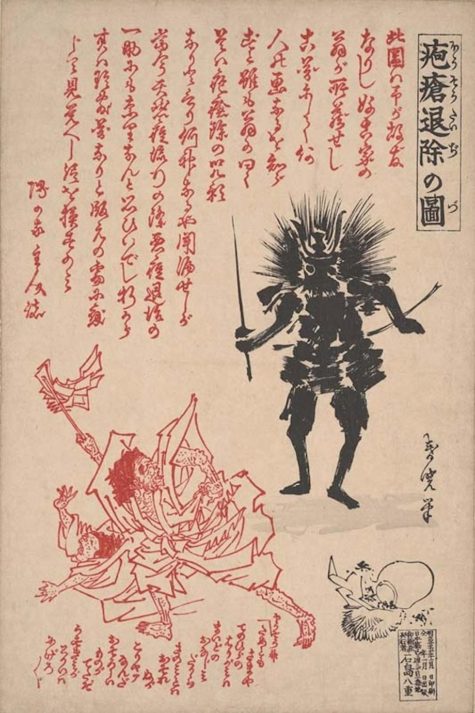
Hosogami are smallpox spirits. (Hoso is the Japanese word for smallpox.) For safe recovery to health, the Hosogami must be soothed, propitiated, and sent on their way. Hosogami are pleased to see the color red. Physicians were glad to see the color red too:
- Purple smallpox rashes indicate the illness is in a dangerous stage.
- If and when rashes turn red, the patient is expected to recover.
The person suffering from small pox and those caring for him dressed in red to appease the Hosogami. In addition, “red prints” or hoso-e prints, paper wall amulets were posted at the first hint of small pox to propitiate, avoid, and/or banish the illness.
Daruma and Shoki possess the power to expel Hosogami and are among the spirits portrayed on red smallpox talismans. They are called “red” because that’s the primary color of these prints. If no print is available, red banners may suffice.
Following the patient’s recovery, these prints were traditionally ritually burned or floated down rivers to signal the departure of the spirit. Extremely few survive and these are now extremely valuable collectors items.
Borrowed from: The Powers That Be
Red vs Blue – Color Matters
In high-stakes politics and business, there are only two colors of ties: red and blue. Oh, sure, you might spot purple or yellow now and then, but those are clear statements of aloofness, be they calculated or careless.
Few world leaders or CEOs want to be seen as aloof.
But does it matter whether one wears red or blue? Yes, suggest several studies, including one published in the journal Science on Feb. 6, 2009. More on that in a moment.
First, some color:
During his first address to a joint session of Congress, President Donald Trump wore a blue and white striped tie. Seated behind Trump, Vice President Mike Pence and Paul Ryan, Speaker of the U.S. House of Representatives, both wore blue ties.
For his inauguration on Jan. 20, President Donald Trump wore a red tie with his dark suit, while outgoing President Barack Obama donned a blue tie. Their wives wore the reverse, with Michelle Obama in a red dress and Melania Trump wearing a powder blue ensemble.
In the first presidential debate of 2016, then-nominee Donald Trump donned a blue tie, while the Democratic nominee, Hillary Clinton, wore a red suit. The Democrats may have decided on “red” during the election, as Clinton’s running mate, Sen. Tim Kaine donned a red tie during the first vice presidential debates on Oct. 4, while Trump’s running mate, then-Indiana governor Mike Pence sported a blue necktie
In President Obama’s first 11 days on the job, he wore only red and blue ties, observed Daily News reporter Joe Dziemianowicz. “Obama represents something different in politics, but he dresses the same as everyone else,” said Esquire senior fashion editor Wendell Brown. “Washington, D.C., is a strange place when it comes to style. All the emphasis is on fitting in.”
At the inauguration in January 2009, Obama and Joe Biden seemed to coordinate efforts: “For the inaugural festivities, both executives chose predictable dark gray suits, white dress shirts, enlivened by either baby blue or red necktie,” wrote Lisa Irazarry of The Star-Ledger in New Jersey. “As Obama wore a blue necktie on Monday and Biden wore his blue Tuesday, maybe they prearranged not to duplicate each other alternating necktie colors.”
Former President George H.W. Bush and former first lady Barbara Bush both had on plum overcoats and purple scarves at the inauguration. They can be aloof now. Plus, purple is associated with royalty and we do tend to treat our former presidents as such.
Where’s all this come from?
The ties to red and blue go way back. Neckties are said to be descended from the cravat and used throughout most of history, at least the portion during which humans have been fully clothed. Blue was once associated with the blue blood of British nobility, while red represented the red blood of the Guards.
Red has long been associated with love. And there’s some science to that, too. A study last year found red clothes on women makes men feel more amorous towards them. In sports, athletes wearing red are known to outperform their opponents, in part because referees cut the red-clad competitors some slack, researchers discovered.
Politicians, of course, love to gain advantages. Neckties are one way they try to do that.
As Washington Post columnist Tom Shales wrote of a televised Bush-Kerry presidential debate in 2004: “Bush wore his traditional blue necktie, though a darker shade than the usual robin’s-egg hue, and Kerry wore the classic TV-red necktie; red ties supposedly lend color to the face of whoever wears them, and if there’s anything the Massachusetts senator needs, it’s color.”
But wait, there’s more.
Red and blue are also thought by psychologists to improve brain performance and receptivity to advertising. The 2009 study in Science supports this idea. It also suggests nuances that world leaders and presidential candidates might want to know about, assuming one buys into the notion that presidential messages and speeches are essentially a form of advertising.
The study found that red is the most effective at enhancing our attention to detail, while blue is best at boosting our ability to think creatively.
“Previous research linked blue and red to enhanced cognitive performance, but disagreed on which provides the greatest boost,” said study leader Juliet Zhu of the University of British Columbia. “It really depends on the nature of the task.”
Zhu and colleagues tracked the performance of more than 600 people on cognitive tasks that required either creativity or attention to detail. Most experiments were conducted on computers with a screen that was red, blue or white.
Red boosted performance on detail-oriented tasks such as memory retrieval and proofreading up to 31 percent more than blue. For brainstorming and other creative tasks, blue cues prompted participants to produce twice as many creative outputs compared with red cues.
Why? Look around.
“Thanks to stop signs, emergency vehicles and teachers’ red pens, we associate red with danger, mistakes and caution,” Zhu said. “The avoidance motivation, or heightened state, that red activates makes us vigilant and thus helps us perform tasks where careful attention is required to produce a right or wrong answer.”
And the value of blue?
“Through associations with the sky, the ocean and water, most people associate blue with openness, peace and tranquility,” says Zhu, who conducted the research with UBC doctoral candidate Ravi Mehta. “The benign cues make people feel safe about being creative and exploratory. Not surprisingly it is people’s favorite color.”
Perhaps presidential candidate’s choice of red vs. blue neckties should be made more thoughtfully than they realize.
Source: Live Science
The Red Gallery
Migraine Cure with Red / Green
I have had good success eliminating a migraine prodrome aura. I cured it by using a special eye exercise. The procedure was intended to work the eyes and the visual centers of the brain harder than usual by forcing them to do a cross-eye fusion procedure. The speculation behind the possible success using this method was based upon a reported brain scan done during migraine attacks which showed an abnormal blood flow to the visual cortex located in the back of the brain. These cross-eye procedures force the brains visual centers to do far more work than is usually required of them and that forces the brain to allocate the blood flow in a different way from what they were doing to create the migraine aura.
This is an experimental procedure which I performed upon myself. I am only reporting what appeared to work for me and I do not necessarily suggesting that you try the experiment so any results you may have, good, bad or inconclusive are strictly upon your own recognizance. However, below are the cross-eye charts which I used successfully to eliminate my visual hallucinations in about three minutes. Usually it takes about 30 to 50 minutes in a dark room with a hot or cold bag on the back of my head to clear up the aura. I have tried both the hot and cold treatments but found that tapping the back of the head worked better. But this cross-eye treatment worked best of all.
What works for me is to look cross-eyed at my finger tip held between the flags about half way to the screen and then to slowly move it towards and away from my face while looking at my finger tip and thinking about the dot. At some point the central dots from the opposite fields fuse into one. When they fuse I slowly lower my finger out of sight while watching the dot. And then in about twenty seconds the light show begins. With Red-green target #36 I like to move my stare between the various smaller dots around the center and to slowly read the numbers and letters. If my eyes uncross I return my finger to the position where fusion took place and can usually get the fusion back in a few seconds.
Here is a different graphic to play around with:
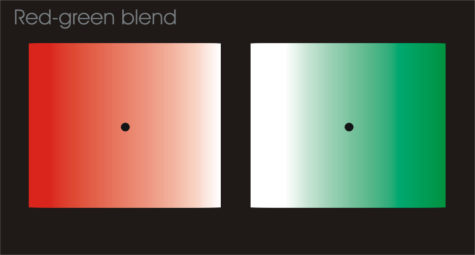
I created these pictures for the cross-eye fusion experiments but I discovered that they confused my visual centers so much that the effort of fusion soon forced my brain to abandon migraine auras and give its attention to the fusion. Even under normal non-aura brain functioning these pictures created highly volatile liable images which will shift quickly through a variety of colors and golden blends.
For more detail on these cross-eye fusion experiments go to the previous mind fuzing experiments. Here is a group of similar eye experiments with more instructions on how to cross your eyes: Eye Experiments.
Please remember these are experiments and you are totally responsible for any strange effects or results. I intended them for learning how your perception works and how it sometimes does very strange and unexpected things.
Source: Probaway
Red In Media And Design
Some of the ways the color red is used in the media and for design purposes:
- Red brings text and images to the foreground.
- Use it as an accent color to stimulate people to make quick decisions; it is a perfect color for ‘Buy Now’ or ‘Click Here’ buttons on Internet banners and websites.
- This color is also commonly associated with energy, so you can use it when promoting energy drinks, games, cars, items related to sports and high physical activity.
Submitted by Raetta Parker
Red Is A Green Issue
Red keeps us rooted in the red energy of our planet. People who become detached or divorced from the planet tend to be those who abuse it. These people often display some of the negative qualities that are associated with red – selfishness and an interest only in personal, rather than global, survival and short-term security.
To be healthy in a long term sense, we need the color red to reconnect ourselves to the planet and support it as it supports us. For our personal development, the role involves taking responsibility for our own well being and survival as part of humanity as a whole, not being separate from it. Although often seen as a “green” issue, global and local conservation is also about survival, which is a red issue. Red and green issues are intrinsically linked as they are complementary colors.
Source Unknown
Feeling Red
Phrases like “red light district” and “scarlet woman” aptly describe the sexual nature of red. Some aspects of red behavior are not socially acceptable. Red together with black is associated with evil, for example in the archetypal “red devil” of medieval artists.
Blatant expression of emotion is not always easy to handle, whether it is sexuality, passion, anger or aggression. When expressing red emotions, the heart beats faster, the capillaries dilate and the skin becomes flushed and feels warm.
Red is thought of as an immediate color. This affects the thinking processes, causing restlessness and impatience. Red can result in very selfish behavior, a focus on personal needs and survival above everything else.
Sometimes the drive to survive is what fuels impulsive actions and rash comments. When these traits are managed well they create capable business people who are innovators and entrepreneurs, preferring to move from one project to another, getting an operation on its feet then moving on. They are gifted with being able to manifest new ideas. Often people with red traits are also renowned for their daring exploits, and they can be somewhat extroverted and boastful about their skills.
Red brings focus to the physicality of life, to the process of living. The color is symbolic of what we need to survive. Life should be grabbed and lived with a sense of immediacy. Without red we become listless and out of touch with reality and we fail to live our dreams in this world. Without the foundation that red gives us we just daydream of escaping into fantasy worlds.
Source unknown

